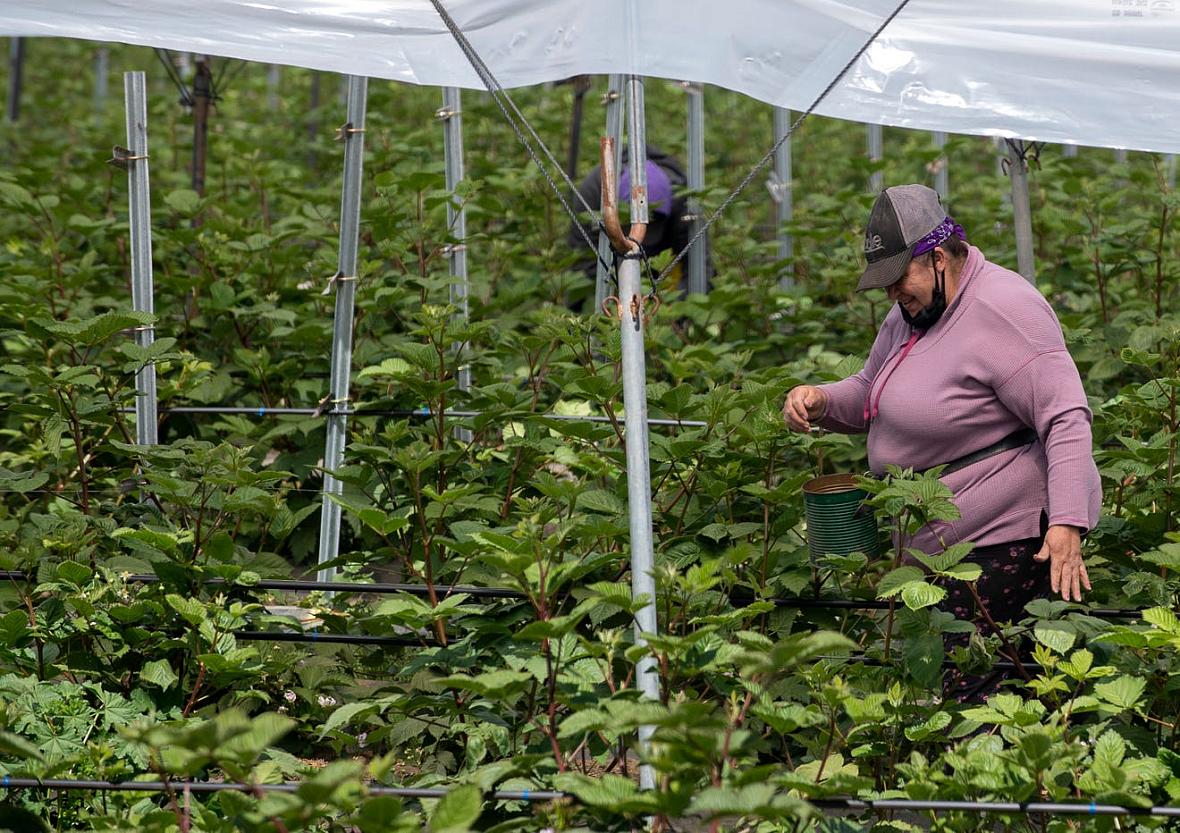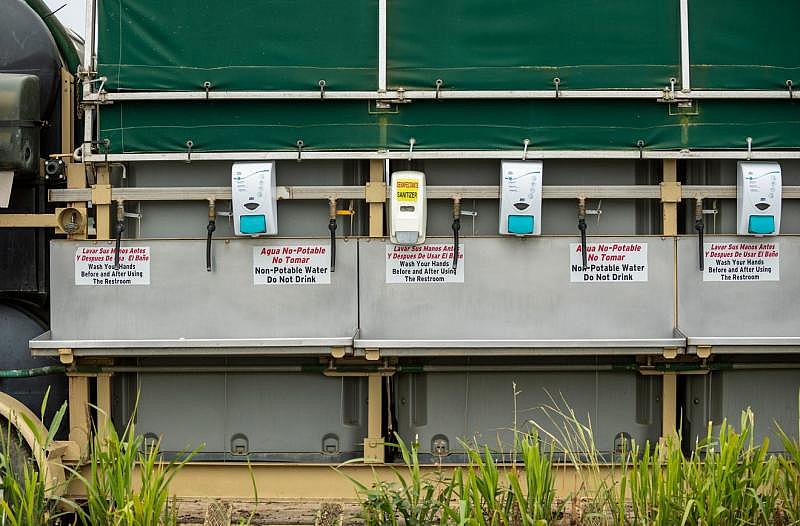Monterey County advocates, growers urge renewed focus on farmworker housing
This story was produced as a project for the 2020 California Fellowship.
Other stories in this series include:
Ag workers exempted from COVID-19 shelter in place mandate, advocates fear for health
Protected in the fields but not at home: Salinas H-2A farmworkers at risk
‘The perfect storm of vulnerability’: Protection in the fields doesn’t follow farmworkers home
Trump plans to halt immigration, California growers aren't thrilled
Monterey County ag workers comprise nearly a quarter of county COVID-19 diagnoses
Sixth person dies from COVID-19, Alisal and North Salinas hardest-hit in county
Monterey County growers face 'unprecedented losses' amid pandemic
Close quarters: Overcrowding fuels spread of COVID-19 among essential and service workers
Evicted Monterey County renters face greater risk of contracting COVID-19
Do California ag counties hold solutions to Monterey County farmworker housing crisis?
Housing bills aim to extend tenant, landlord protections for Californians amid pandemic

Educators, families and high school students honked and clapped at farmworkers around the Watsonville community during the Watsonville Campesino Appreciation Caravan on Tuesday, May 5, 2020.
David Rodriguez/The Salinas Californian
How do you think the community can improve and increase housing in Monterey County? What are some ways you’d like to see local regulations change to grow housing in this area?
The following responses were submitted by members of an advisory board on farmworker housing that featured growers, advocates, and service providers in Monterey County, organized by The Californian reporter Kate Cimini.
All agreed the situation as-is could not continue. Some called for a streamlined process for developers while others pushed for better guidance by local officials.
Their responses have been edited for length and clarity.
Chris Valadez, President of Grower-Shipper Association of Central California
The lack of affordable housing and subsequent or ongoing efforts to increase housing must operate (or start to) under a crisis-scenario where all obstacles and potential opportunities may be subject to review, and in turn, revision to accommodate a goal of more housing. For agricultural operations, the result of any housing-related cost-benefit assessment, while individual, ultimately affects an ability to produce food locally, where any such investment in both housing, and the workforce, also stands to present an opportunity to help secure the long-term sustainability of the industry and the region’s economy.
Politically, and you’ve heard this often, as a matter of “public” policy if we can waive costly building requirements to enable construction of important projects, such as a professional sports stadium justifying the economic benefit of a new choice, can we (or why can’t we) make changes to support the development of more affordable housing?
Matt Huerta, Director of Housing at Monterey Bay Economic Partnership
Monterey County is several thousand homes short of meeting its state-mandated regional housing needs, especially for lower-income residents, and all its local governments should create an emergency action plan for meeting these regional housing needs assessment goals. Each emergency plan should include short-term (one to two years) and long-term (three to 10 years) production goals.
A farmworker wearing a face mask picks raspberries in Watsonville, Calif. David Rodriguez/The Salinas Californian & Catchlight
The short-term goals must include removing all unnecessary barriers to production, such as restrictive zoning, arbitrary height limits, and unrealistic commercial space and parking standards for areas near job centers and with access to public transportation. We have the land to do this in all parts of the region. Lower development costs will make for-sale inclusionary homes more feasible to include in new projects at these sites.
The time is now for bold investments; we can not wait another 30 years to address our housing supply backlog.
Jennifer Coile, retired Director of Salinas and Pajaro Valley Housing Study
Politically, when will farmworkers' lives matter? Farmworkers' lives need to matter to local/state/national leaders — whether year-round, permanent, seasonal, migrant, temporary, H-2A, senior, or retired. Up until now, they haven’t mattered, but COVID-19 has shown us the fragility of the food network in the U.S. and our increasing reliance on foreign workers to plant, harvest, and process our food.
We need to expand the opportunity for consumers to play a role in supporting decent farmworker housing conditions, such as the Equitable Food Initiative (EFI) certification, which is awarded to companies based on a set of evaluation criteria for working conditions, food safety, and pest management. When consumers choose to buy fruits and vegetables with the EFI certification, they are supporting a company that has met the standards for fair working conditions, including the employees’ housing. Support the expansion of certifying Monterey County companies through EFI and consumer awareness of their choices.
Sanitizers and soap dispensers are placed next to hoses of water that farmworkers use to wash their hands before and after picking strawberries and eating lunch in Watsonville, Calif. David Rodriguez/The Salinas Californian & Catchlight
If H-2A workers are “guest” workers, I feel like we are bad hosts. The lack of comprehensive, fair immigration policy reform has of necessity increased the reliance of agricultural employers on foreign workers with a temporary H-2A visa. Employers are legally required to provide young men, alone, far from home, meals, transportation, and 50 square feet of living space. But besides work and pay, do we as a community offer recreational opportunities, music, singing together, playing soccer, an invitation to Thanksgiving dinner, a chance to meet Americans, and learn about U.S. culture?
In order to take care of retired farmworkers, why not allocate a percentage of units for retired farmworkers in every affordable housing development for seniors in Monterey County? These farmworkers contributed to the success of the regional economy, with what can be described literally as "back-breaking" work.
And when anyone proposes to develop a farmworker housing project in an incorporated city or unincorporated Monterey County, the city manager could appoint a “navigator” to assist with processing the approvals through the bureaucracy.
Matt Barreras, General Manager of Valley Pride
Valley Pride's experience attempting to build farmworker housing showed us that the general housing ecosystem needs improvement in building attractive low-income housing projects. The process needs to be streamlined to improve time and efficiencies to adequately cover our community and environmental requirements.
Currently, it’s a slow and rigid process that includes permitting, mitigation requirements such as school impact fees, traffic impact studies, water and sewage fees, and several environmental requirements that take significant time to address.
One consideration could be to have an advocate or champion within the county to facilitate the housing projects.
We also need a platform – such as an interactive manual – that expedites the entire process.
Kate Cimini is a journalist for The Californian covering ag, housing and health. She reported this story with support from the California Fellowship through the USC Annenberg Center for Health Journalism. Engagement editor Danielle Fox contributed engagement support to this story. Share your story at (831) 776-5137 or email kcimini@thecalifornian.com. Subscribe to support local journalism.
[This story was originally published by The Californian.]

